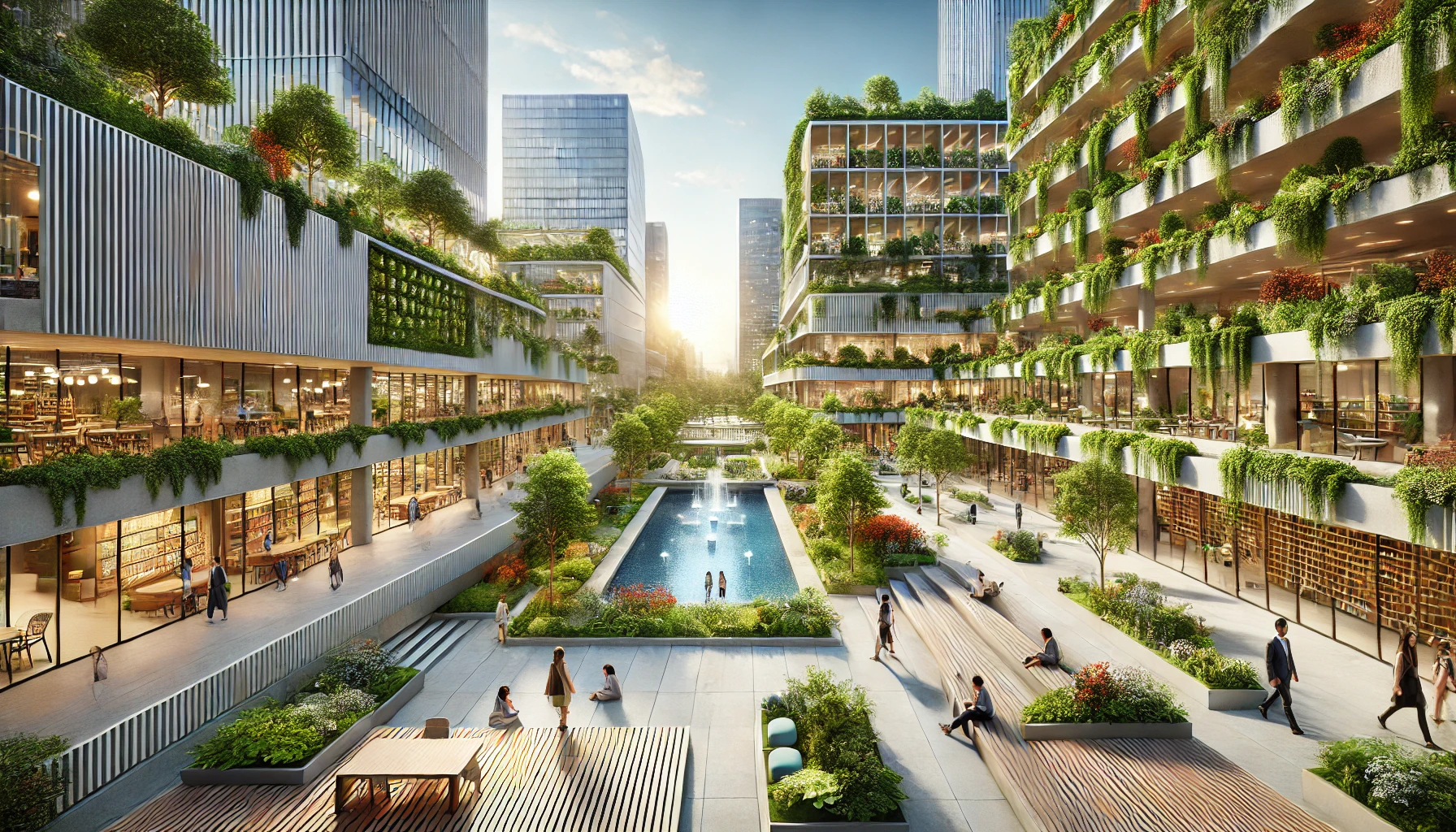
Biophilic Design: Bringing Nature Into Urban Spaces
Imagine a world where cities breathe like forests. That’s the magic of biophilic design—blending nature with urban living to create healthier, happier environments. In this article, we'll explore how green spaces, renewable energy insights, and sustainable living tips are transforming the way we experience city life.
What Is Biophilic Design?
Biophilic design isn’t just about adding a few plants to an office. It’s a philosophy that integrates nature into architecture, fostering a deep connection between people and their surroundings. Think living walls, rooftop gardens, and buildings that breathe with natural ventilation. This approach enhances mental well-being, boosts productivity, and even supports climate change solutions.
Why Cities Need Biophilic Design
1. Fighting Urban Heat Islands
Ever noticed how cities feel hotter than rural areas? That’s the urban heat island effect. Concrete and asphalt absorb heat, raising temperatures. Green roofs and tree-lined streets help cool things down, making cities more livable.
2. Improving Air Quality
Pollution is a major urban problem, but nature offers a solution. Trees and plants act as natural air filters, absorbing CO₂ and releasing oxygen. Cities embracing biophilic design enjoy fresher air and fewer respiratory problems.
3. Boosting Mental Health
Imagine sipping coffee in a lush green courtyard instead of a dull office break room. Studies show that access to nature reduces stress, improves mood, and enhances cognitive function. A little greenery goes a long way!
How Renewable Energy Supports Biophilic Design
1. Solar Power for Homes
Sunlight isn’t just for plants—it’s also a powerful energy source! Using solar power for homes reduces reliance on fossil fuels and lowers electricity bills. The benefits of using solar energy at home include sustainability, cost savings, and energy independence.
2. Energy-Efficient Innovations
From smart thermostats to energy-efficient lighting, technology plays a crucial role in sustainable design. Investing in energy-efficient appliances minimizes waste and enhances a building’s eco-friendly footprint.
3. Green Building Techniques
Materials matter! Top green building techniques include recycled materials, natural ventilation, and rainwater harvesting. These methods create buildings that work with nature, not against it.
Transportation and Biophilic Cities
1. Best Electric Vehicles 2025
Cars and green cities? Yes, it’s possible! The best electric vehicles for 2025 are designed to reduce carbon footprints while providing top-tier performance. Think of them as eco-friendly chariots driving the future of urban mobility.
2. Walkability and Cycling Lanes
Imagine a city where you rarely need a car. Biophilic urban planning prioritizes walkable streets and cycling lanes, reducing congestion and promoting healthier lifestyles.
Top Green Technologies Shaping the Future
The future is green, and innovation is leading the charge. Here are some top green technologies shaping the future of sustainable cities:
- Vertical Gardens: Turning skyscrapers into lush, oxygen-producing ecosystems.
- Smart Water Systems: Reducing waste through intelligent irrigation.
- Self-Sustaining Buildings: Structures that generate their own energy and manage waste efficiently.
How to Start Living Sustainably
Want to make a difference? How to start living sustainably is easier than you think:
1. Reduce, Reuse, Recycle
Less waste means a healthier planet. Opt for products with minimal packaging and repurpose items whenever possible.
2. Choose Sustainable Transportation
Walking, biking, or driving an EV? Every choice matters. If you’re shopping for a car, consider the best electric cars for an eco-friendly lifestyle.
3. Make Your Home Energy-Efficient
Simple changes, like using LED bulbs and upgrading insulation, can make a huge impact. Curious how? Check out our guide on how to make your home more energy-efficient.
Conclusion: A Greener Future Starts Now
Biophilic design isn’t just a trend—it’s the future of urban living. By integrating nature into cities, embracing renewable energy insights, and adopting sustainable habits, we can create spaces that nurture both people and the planet. The journey toward greener cities starts with small steps, but together, we can make a massive impact.
FAQs
1. What are the key benefits of biophilic design?
Biophilic design improves air quality, reduces urban heat, enhances mental well-being, and supports sustainability.
2. How does biophilic design contribute to climate change solutions?
By integrating green spaces and energy-efficient innovations, biophilic design helps reduce carbon footprints and promote environmental balance.
3. What are some affordable ways to start living sustainably?
Use solar power, switch to energy-efficient appliances, reduce waste, and opt for sustainable transportation.
4. What are the best electric vehicles for 2025?
The top EVs in 2025 will focus on longer battery life, faster charging, and eco-friendly production.
5. How can I make my home more energy-efficient?
Install smart thermostats, use LED lighting, improve insulation, and switch to solar energy.